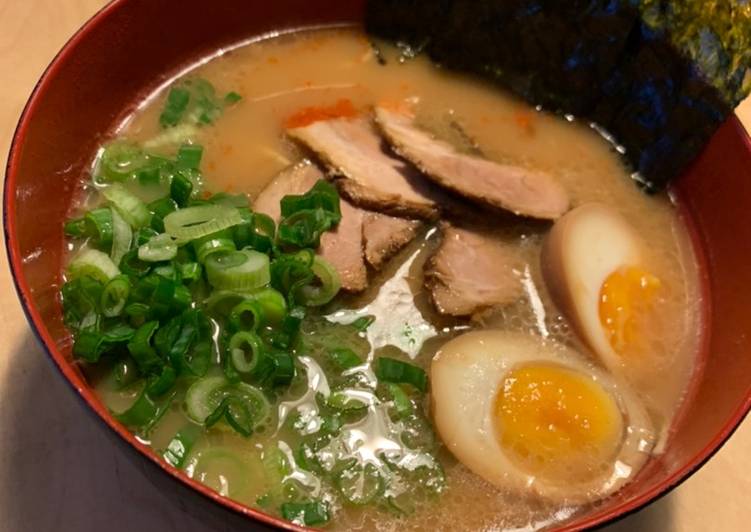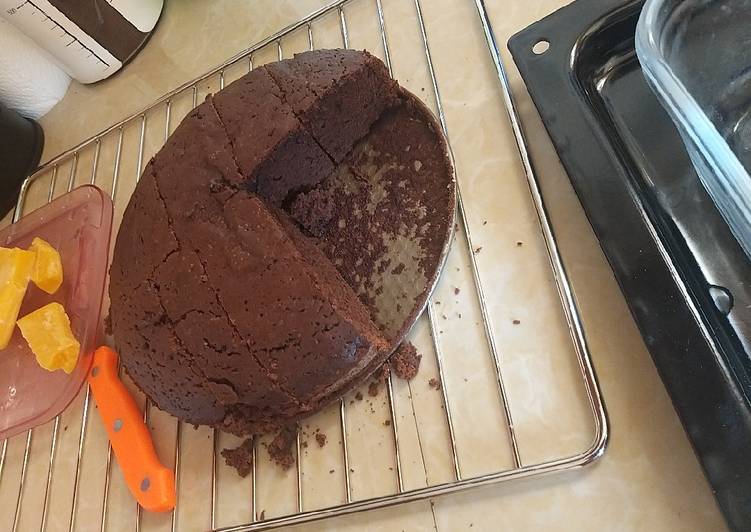
Hello everybody, hope you are having an amazing day today. Today, we’re going to make a distinctive dish, japanese braised pork belly. One of my favorites. For mine, I am going to make it a bit unique. This is gonna smell and look delicious.
Japanese braised pork belly is one of the most favored of recent trending foods in the world. It’s enjoyed by millions daily. It’s simple, it is fast, it tastes delicious. Japanese braised pork belly is something which I’ve loved my whole life. They’re fine and they look wonderful.
Kakuni (Japanese Braised Pork Belly) - Slow cooked pork belly in soy sauce glaze, serve with shiraga negi and egg on the side. This post may contain affiliate links. Please read my disclosure policy for details. Make this easy, melt-in-your-mouth Chashu pork belly recipe at home!
To get started with this particular recipe, we must first prepare a few ingredients. You can have japanese braised pork belly using 11 ingredients and 7 steps. Here is how you cook it.
The ingredients needed to make Japanese braised pork belly:
- Get 2 tablespoon sugar
- Prepare 450 gram pork belly
- Get 100 gram soy sauce
- Prepare 80 gram cooking wine
- Take 4 piece garlic
- Get 10 gram ginger
- Make ready 10 gram spring onion
- Get 2 star anise(optional)
- Get 1 cinnamon stick(optional)
- Take Sichuan pepper (optional)
- Prepare Fennel seed(optional)
My version uses a mild braising liquid that makes this Kakuni perfect for using as a topping for ramen, udon, rice, and even sandwiches. Braising a pork belly must be a typically asian thing to do, as there is a filipino dish that looks very similar, called humba. I recently found your site, and was very excited to see Japanese food recipes in English, because I live in Japan and have always wanted to make more Japanese food. Tender, juicy chunks of pork belly that have been braised until tender and glazed in a braising liquid made from dashi (Japanese sea stock), mirin Braised and simmered dishes, known as nimono, are the backbone of Japanese cooking.
Steps to make Japanese braised pork belly:
- Remove the pork skin then tie the pork belly up to a roll
- Stir fry the ginger, garlic and spring onion till it’s golden brown.Take it out to wait for next step.
- Pan-fry the surface of the pork belly until it ‘s golden brown. Put sugar in the pot until it’s caramelized. Coat the pork belly with caramelizad sugar.
- Put the soy sauce and cooking wine into the pot. Add the ginger. Garlic and onion back into the pot along with the spices (optional)then add 500 grams of water. Boiled in medium fire for 40 mins.
- Cool down the sauce and pork. Move them into a container where the source could cover the whole pork. Leave it in the fridge overnight
- Cut the pork into thin slice when it’s cold if you want to use the pork for Ramen topping
- For pork belly rice bowl, heat up the pork along with sauce. Sprinkle the sauce on top of the pork belly rice bowl. Add any preferred topping. Voilà ❤️
I recently found your site, and was very excited to see Japanese food recipes in English, because I live in Japan and have always wanted to make more Japanese food. Tender, juicy chunks of pork belly that have been braised until tender and glazed in a braising liquid made from dashi (Japanese sea stock), mirin Braised and simmered dishes, known as nimono, are the backbone of Japanese cooking. Braising and simmering creates dishes that are moist, tender. Tender and fatty, the pork belly is simmered for a few hours in a broth of sake, mirin, soy sauce, and other ingredients until it falls apart and the fat is silky. If you've ever visited an izakaya in Japan, chances are you've had this braised pork belly dish called buta no kakuni.
So that is going to wrap this up with this special food japanese braised pork belly recipe. Thank you very much for reading. I’m sure that you can make this at home. There is gonna be more interesting food in home recipes coming up. Don’t forget to bookmark this page on your browser, and share it to your loved ones, colleague and friends. Thanks again for reading. Go on get cooking!

